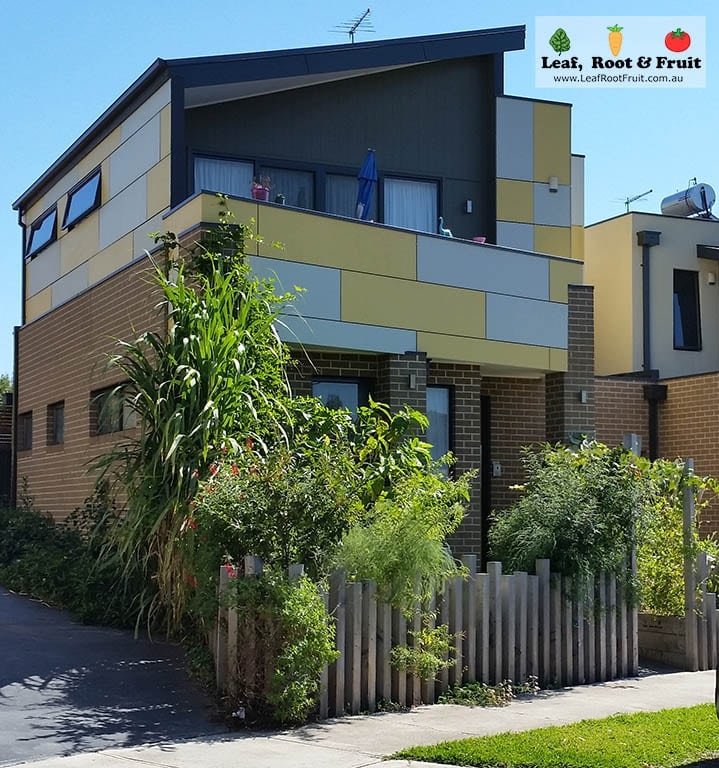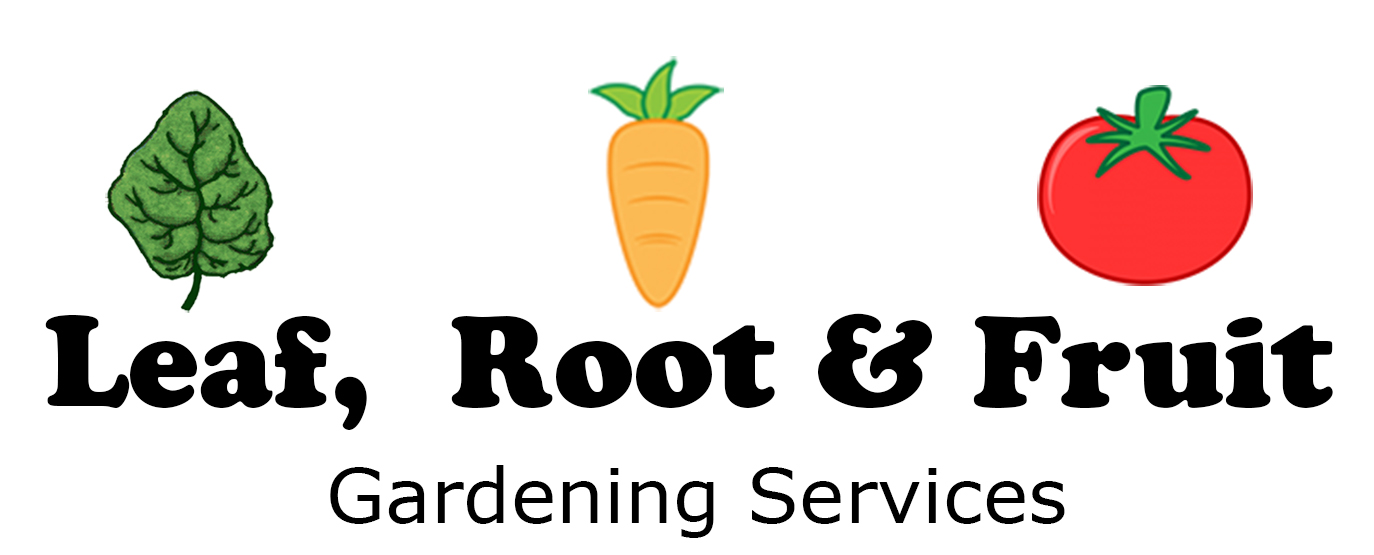Edible forest gardening is the ultimate in producing, food whilst keeping in harmony with nature.
Forests usually exist without active management from humans.
- No one weeds a forest
- No one prunes the trees in a forest
- No one fertilizes a forest
- No one sprays for pests and disease in a forest
- No one waters a forest
- No one mulches a forest
Yet despite all of this, nature ensures that the forest survives and thrives. It balances itself through self-regulation and feedback loops.
Leaf, Root & Fruit design gardens, to mimic natural forest ecosystems.

An edible forest garden design doesn’t automatically mean that your backyard is about to be covered in a dense canopy of 30m tall trees. Forest gardeners use the forest as an inspirational design tool. They take the lessons learned from observing forests and apply them to edible garden design.
Using productive and useful plant species allow us to focus on creating a resilient ecosystem, to meet human needs in a small space.
Anyone with a small patch of land can grow an edible forest garden. They’ve been created in small suburban backyards and large parks, on suburban blocks, and in small plots on rural farms. Forest gardening has a long history in the tropics, where there is evidence of the practice extending over 1,500 years, An attractive, resilient and functional outdoor space can be designed for the space available. It will be a largely self-maintaining, healthy ecosystem full of productive plants, beneficial insects and indigenous wildlife.
Edible forest gardening, can give gardeners a fantastic experience in seeing ecology in action. It helps us to be a part of nature, rather than as separate entities intervening in and dominating the natural world.
Imagine going away for 6 months and returning to see the state of your lawn and manicured hedges. What a mess! On the other hand, go away for 6 months and your edible forest garden will look very much like when you left it.
Even after hundreds of years without human interaction, your edible forest garden is still likely to be a productive, self-maintaining ecosystem.
Edible forest gardening focuses on using perennial species of plants rather than annuals. Annual crops such as corn, tomatoes and beans require seed to be saved and then replanted each year. This is time consuming and utilises many resources. Planting longer lived perennials enables a “set and forget” approach to gardening. This frees up more of your time to enjoy the fruits of the garden rather than on garden maintenance.
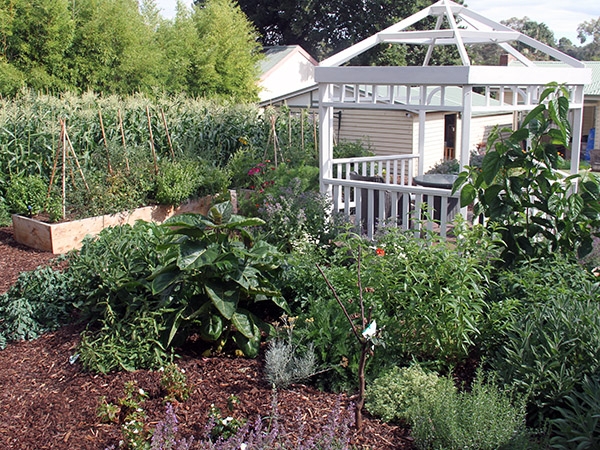
How are edible forest gardens different to other forms of gardening?
More traditional forms of gardening may involve lawns, hedges, and even growing annual veggies in rows. These activities are labour intensive, need regular maintenance, and often have high input requirements of fertilizers, pesticides, mulching etc. Modern gardens often have large amounts of unoccupied spaces within them. This creates niches for unwanted plants to flourish. Many modern garden designs create vacant spaces for plants to occupy and then we wonder why the weeds turn up!
Edible forest gardening focuses on occupying all the available niches in the garden, to produce food or other useful benefits. Instead of looking at a space as a 2-dimensional floor plan of lawns, hedges, shrubs and trees, we design gardens to make use of all the spaces in between. Edible forest gardeners can often be heard talking about layers.
Some of the Edible Forest Garden layers we incorporate:
- Canopy: tall trees (e.g. apple, pear, avocado, mulberry)
- Low-tree layer: smaller trees on dwarfing (or super-dwarfing) rootstocks (e.g. apricot, peach, nectarine,)
- Shrub layer: flowering, fruiting, and wildlife-attracting shrubs (e.g. blueberry, currant, pineapple sage)
- Herbaceous layer: non-woody, soft stem plants (e.g. asparagus, rhubarb, flowers, cover crops, cooking herbs)
- Ground cover layer: low plants that grow close to the ground and make conditions difficult for weeds to grow (e.g. alpine strawberries, nasturtiums, oregano, native violets)
- Root layer: plants that grow underground (e.g. yacon, Jerusalem artichokes)
- Vine layer: plants that grow vertically around trees (e.g. grapes, passionfruit, kiwifruit)
The idea is that incorporating as many layers from a forest as possible in your garden will ensure that as many niches as possible are filled. Planting ground covers, canopy trees, shrubs and vines provides competition to unwanted plants (“weeds”) and reduces maintenance requirements, and maximises production from the space.
Edible Forest Garden Succession
Clever forest gardening, doesn’t only design around the different layers of a garden. It also considers the succession of plants over the course of time. By observing and predicting how plants will grow and interact within the space we can design gardens to make use of early niches. For example, it may take years for a canopy tree to reach maximum size. By planting fast growing, short lived species (pioneer plants) nearby, we can occupy any vacant space and out compete weeds. Usually these short-lived pioneer plants have other benefits, such as fixing nitrogen to feed to the soil, or providing “chop and drop” mulch for the garden. Of course, they can also be edible!
We focus on using perennial species of plants rather than annuals. Annual crops such as corn, tomatoes and beans require seed to be saved and then replanted each year. This is time consuming and utilises many resources. Planting longer lived perennials enables a “set and forget” approach to gardening. This frees up more of your time to enjoy the fruits of the garden with your family.
Companion Planting: Guilds and Polycultures
Placing plants in the garden that support each other is called companion planting. It’s quite a common concept to many traditional veggie gardeners. Edible forest gardening takes companion planting to the next level. Structuring guilds (sometimes called polycultures) within your edible forest garden is that which gives it its resilience. Edible forest gardens usually consist of many guilds or polycultures.
Not all plants in an edible forest garden are there for our food!
Ok, so the primary aim of edible forest gardening is to produce food. But we also need plants to fill some of the following functions. Often, they fulfill multiple functions for us.
Plants for Living Mulch
Some plants act as a living mulch. These are usually ground-covers that spread over the soil to protect it. They can help to retain soil moisture levels and out-compete weeds.
Examples: Chamomile, Nasturtium, Oregano, Thyme, Strawberries, Violets.
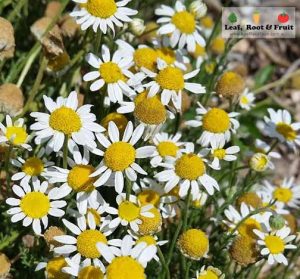
Plants for Nitrogen Fixation
Nitrogen is one of the most important elements for plant growth. Modern agriculture relies on heavy inputs of nitrogen rich fertilizers. However, there are many useful plants that fix atmospheric nitrogen in the soil and make it available to other plants (Three sisters gardening relies heavily on nitrogen fixing bean plants). Most of the legumes fix nitrogen, but so do many other plants. We incorporate nitrogen fixers (often they are indigenous ground covers) into our forest gardens to reduce the need for artificial fertilizing.
Examples: Fenugreek, Acacias, Beans, Lucerne, Clover, Running Postman.
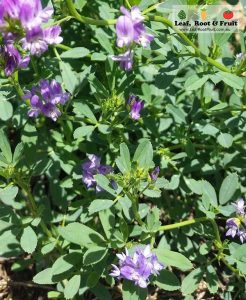
Plants for Dynamic Accumulation
Australian soils are very old (relatively speaking) and many of the nutrients have leached out over millions of years. Fortunately, there are many plants that accumulate various nutrients to higher levels than other plants. When their leaves die and fall to the forest floor (or are “chopped and dropped”) the organic matter is decomposed. The decomposition process releases the nutrients, making them available for uptake by other plants in the food forest. Some dynamic accumulators have a very deep tap root that can bring minerals from deep down in the sub soil and later make it available to other plants at the surface.
Examples: Comfrey, Borage, Dandelion, Chicory and Stinging Nettle.

Plants for Attracting Beneficial Insects
One of the cornerstones of organic gardening is attracting beneficial and predatory insects into the garden. Populations of bugs in the garden pulse in and out of balance, but are always kept in check by other bugs. This pest-predator interaction is fantastic to watch. Whitefly populations may explode one week, and the hoverflies, lady bugs or lacewings will breed up in response and bring it back into balance. The exception is when we spray bugs, eg Aphids it throws nature out of balance and our landscape becomes reliant on our intervention. One of the cornerstones of our “do nothing gardening” is attracting beneficial and predatory insects into the garden. Predatory bugs in their larval stage usually eat the unwanted pests such as aphids or whitefly. The adult stage of the predatory bugs usually eat pollen, so we plant flowering species to keep the adults hanging around to breed. Without this food supplied to them year-round, they’ll fly off somewhere else. We need to keep base populations of these good bugs in our gardens so they can quickly respond to pest outbreaks for us. Generally predatory bugs have short mouth parts, so flowering plants that the pollen can easily be accessed are important.
Examples: Yarrow, Queen Anne’s Lace, Passionfruit Marigold, Calendula, Daises, Holy (perennial) Basil.
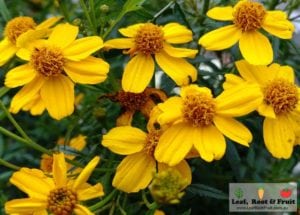
Plants for Pest Control
Some plants produce strong scents that may mask the smell of your tasty productive plants. Possums seem to hate nasturtiums, so these can be great for hiding seedling plants among while they get established. Chives and other allium plants might confuse aphids and other predatory bugs from locating your strawberries.
Examples: Chives, Garlic, Passionfruit Marigold, Mint.
Other plants are considered go one step further and act as trap crops. This is because they may be preferred by the pest species over your tasty produce. Not all sacrificial plants are trap crops. Some simply exist to feed the pests in preference to our productive plants.
Examples: Land Cress, Nasturtiums.
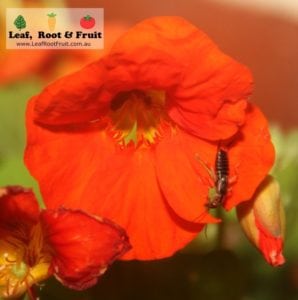
Plants for Wildlife Habitat
Any balanced forest ecosystem involves wildlife. Wildlife can provide many benefits to the garden, including:
- Pest control of bugs, snails and slugs
- Pollination of flowers
- Dropping of manure (= fertilizer)
Or you may just like having some of our indigenous wildlife occupying your outdoor space! Biodiversity is the key to a resilient ecosystem. So we often include plants and features in our garden just to increase wildlife and biodiversity.
Examples: Grevilleas, Grasses, Yarrow, Gaura, Acacias, Kangaroo Paw.
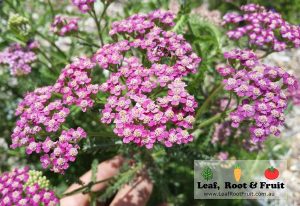
You can check out our comprehensive list of understory plants that we often include in the Edible Forest Gardens that we implement. This list may give you some idea about what to plant as an understory in your own backyard orchard.
The Underground Network
Ask someone to draw a tree and often you’ll get something looking a bit like this.
But that’s only half of the picture. Usually more than half of a plant exists underground. Yet, as gardeners we often neglect this fact and ignore the most important aspect of gardening… the soil!
In the soil is an impressive food web of predators and prey. Earthworms, bacteria, nematodes, amoebas, invertebrates and fungi all coexist. They decompose organic matter and ultimately make nutrients available to feed our edible forest garden.
Soil is a complex community that humans barely understand. Research has shown that networks of fungi, called mycelium form a complex underground network. This network can join plants (often of unrelated species) and allow them to communicate and even share nutrients.
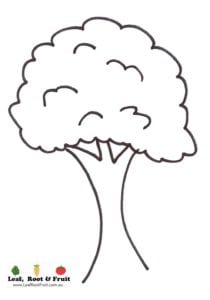
Disturbance of soil can destroy this underground network and throw the soil out of balance. This reduces the resilience of ecosystems and favours pioneer plants (often termed weeds) to proliferate. Disturbing the soil and increasing nutrient content (especially nitrogen) creates a soil dominated by bacteria. This is great for growing veggies and weeds, but not great for a resilient ecosystem. To cultivate a great ecosystem, we advocate reduction of soil disturbance and an initial mulching with coarse wood chips. Coarse wood chips promote fungal growth over bacterial growth and hence a resilient system. Planting an edible forest garden, often means that the soil is only disturbed once, and then that’s it. So, once properly set up and established, weeds are actively selected against and your garden with flourish with minimal effort on your part.
Edible Forest Gardening in the Suburbs of Melbourne
A question we often get asked is “I’ve only got a small space of a couple of square metres to play with, that’s not enough space for a forest garden. Surely a raised garden bed is a better investment for me?”.
Well, if you’re really into tomatoes and lettuce and managing your garden bed intensively, then give it a go. However, an edible forest garden can be squeezed into very small spaces and enable a much greater interaction with nature with much less effort. It’ll be more resilient too… chances are, if left alone your forest garden will still be producing food in hundreds of years’ time. Your raised veggie bed on the other hand is likely to be a mass of privet and ivy!
Remember, we’re not advocating for massive trees and 100% canopy cover so no sunlight ever reaches the ground-cover plants. In our temperate climate 100% canopy cover is going to see your forest garden have some issues through too much competition. A forest garden can be a reasonably open space and it can certainly be very aesthetic. In fact, with only a quick glance, you might not even recognise some of our edible forest gardens as being any different to many other ornamental gardens around the area.
Sure, in small spaces the goal of a self-regulating and maintaining ecosystem may be impossible. However, the more elements of a forest that your small garden space adopts, the more resilient and low-maintenance it will be.
Winton Road Food Forest, Ashburton
Want to see Edible Forest Gardening in action? We have a young forest gardening in the making right on our doorstep. The City of Boorondara have been quite progressive, in facilitating an Edible Forest Garden on some of our local parkland in Ashburton. It’s well worth a visit to the Winton Road Food Forest. Take the kids and enjoy a picnic!
Tell me more!
This page is a very simplified overview of Edible Forest Gardening. I could write huge books on Edible Forest Gardening and, many people already have.
Edible Forest Gardens by Dave Jacke and Eric Toensmier is a truly epic manual that covers pretty much everything you’d need to know and then a whole lot more. Duncan completed the 10-day Forest Garden Design Intensive with Dave Jacke in 2016.
Creating A Forest Garden: Working with nature to grow edible crops by Martin Crawford is another great book written by one of England’s pioneering Edible Forest Gardeners.
I have also published a list of the understory plants that I use the most in my Edible Forest Gardens.
Ok I’m convinced…how do I sign up for an Edible Forest Garden at my place?
Start by booking in a garden consult. During the consult I can discuss the best approach for your situation. Alternatively you may want to attend one of our popular classes on Edible Forest Gardening. Check out our upcoming events to see when the next one is running.
